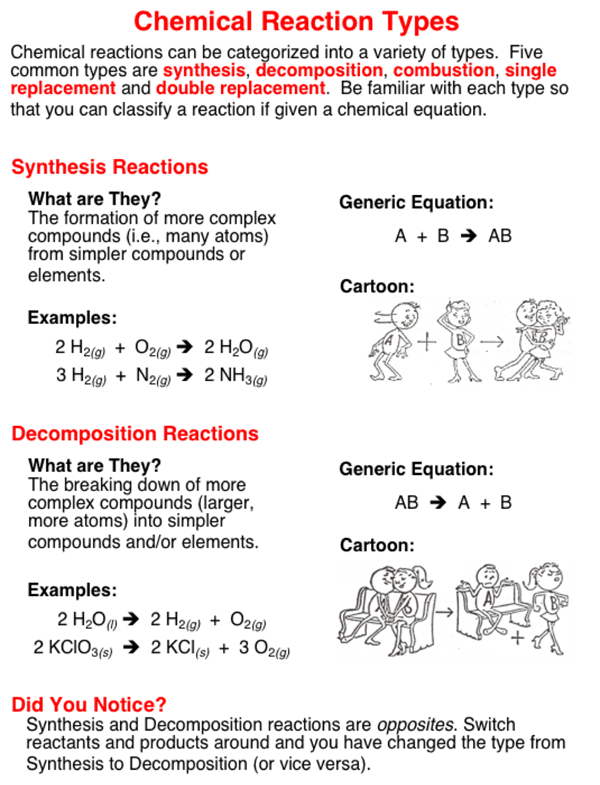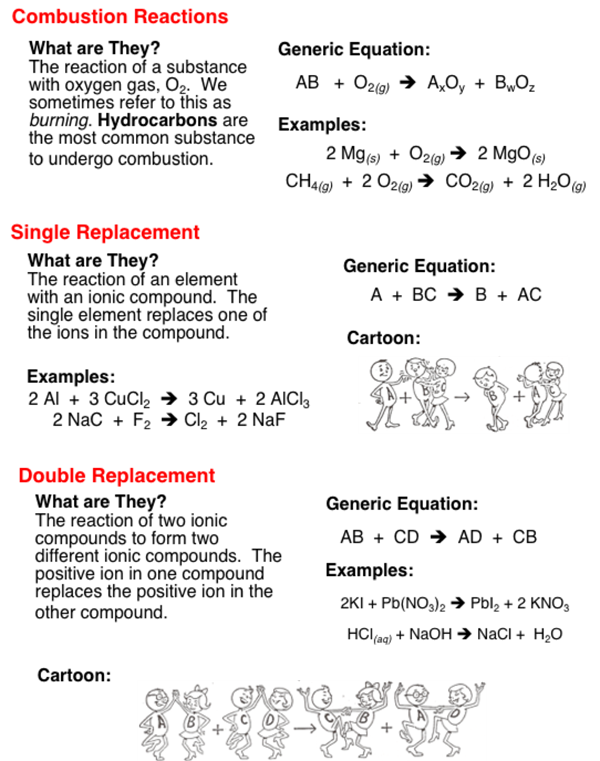Chemical reactions involve changes - changes of reactants into products. Basic chemical reactions can be grouped into categories based on the types of changes that are occuring during the reaction. There are five basic categories - synthesis, decomposition, combustion, single replacement, and double replacement.
Chemical Reaction Types - Questions 10 Help
There are three questions in this Question Group. The three questions are very similar. Only the ordering of answer options differs from one question to the next.
Version 1:
Identify the reaction type of each reaction described below.


